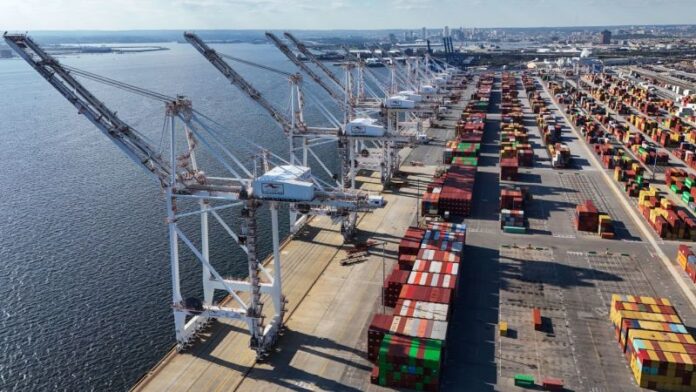New York (CNN) – It took three days for one side to give in and the potentially paralyzing strike at US East Coast and Gulf ports came to an end, with probably limited damage to the US economy.
Members of the International Longshoremen’s Association (ILA), the union representing 50,000 members covered by the U.S. Maritime Alliance contract, returned to work early Friday after both parties will reach an agreement on the key dispute of the strike that began early Tuesday: the scale of salary increases.
The strike had threatened to disrupt supply chains, leading to shortages of some consumer goods and supplies needed to keep American factories running. It also temporarily cut off the flow of many American exports, jeopardizing the foreign sales of some American companies.
But the damage was relatively limited, as the strike only lasted three days, mainly because many shippers had rushed to move their goods through the ports before the strike began at 12:01 p.m. on Tuesday, a deadline who had known each other for months.
The maritime alliance, which operates under the acronym USMX, agreed to raises of $4 an hour for union members on top of the current base wage of $39 an hour, an immediate increase of just over 10%, according to one person. familiar with the agreement. Union members will then receive additional raises of $4 per hour each year for the life of the six-year interim agreement. This will mean a total increase of US$24 per hour during the term of the contract, that is, 62% in total.
The union had been willing to consider the $4-an-hour deal before the strike, union boss Harold Daggett said on the picket line outside the Port of New York and New Jersey early Tuesday, shortly after it began. of the strike. But when the company countered with an offer of $3 an hour, Daggett rejected it with colorful language and led its members to their first strike since 1977.
But on Thursday the USMX agreed to raise its offer, and the strike quickly ended.
Once an agreement was reached on wages, both sides were eager to get workers back to work as soon as possible, even if there was still more to be resolved about the rest of the contract.
There were ships anchored offshore waiting to enter ports from Maine to Texas, to load and unload goods. The workers, who were not paid and did not have any union benefits during the strike, were eager to limit their loss of income. So the logical thing for both sides was to call off the strike and extend the previous contract until January 15, while the parties negotiated the remaining details.
But the flow of goods will still take some time to return to normal. Before the strike, several logistics experts had said it would take three to five days to recover from any one day of port closures.
For example, both the Port of New York and New Jersey, the largest affected port and the third in the country by cargo volume, and the Port of Virginia, announced to maritime operators that their doors would remain closed to trucks on Friday, while Both ports are working to ensure that containers can circulate through their facilities as soon as possible.
Containers can typically be loaded directly from ships onto trucks, but they are also often stacked on port grounds waiting to be picked up and moved. Trucks will be able to enter the gates starting Saturday. Other ports are considering adding weekend hours to try to deal with the backlog of work.
Of course, a three-day shutdown is not uncommon, even though this is the first strike in nearly half a century. Extreme weather conditions can also cause shutdowns. In fact, several of the affected ports in the Southeast had been closed prior to the strike due to Hurricane Helene.
Although there was talk that the strike would affect hurricane recovery efforts, there was almost no impact on the flow of emergency supplies to storm victims. All ships calling at these ports are foreign owned and originate from overseas ports. Under U.S. maritime law, such ships cannot transport goods from one U.S. port to another.
Thursday’s agreement is probably the end of the strike, but it does not close the door to a new strike in the future. The final language of the full contract, when finalized, will have to be ratified by the union’s rank-and-file members before it can take effect.
If members vote against the agreement, the strike could resume. And this kind of rejection of a provisional labor agreement is not unheard of.
Last month, the International Association of Machinists and aircraft manufacturer Boeing reached a tentative agreement, which union leaders recommended their 33,000 members accept. Leaders even described it as the best deal they had ever negotiated with the company. But union members voted almost unanimously against it and have remained on strike since September 13.

